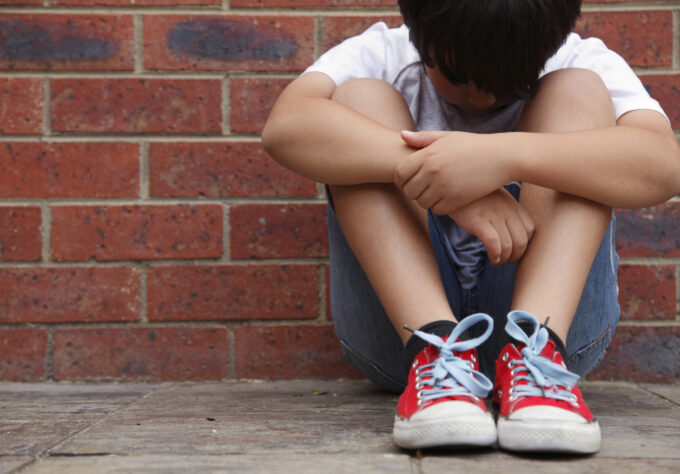A recent survey by Nemours Children’s Health System, the Delaware Survey of Children’s Health (DSCH), showed that parents of 88 percent of children with asthma were educated by health professionals on how to recognize early signs or symptoms of asthma episodes in their child.
Understanding what an asthma flare-up is and how to recognize the early signs or symptoms are key steps in improving the health of your child.
Increasing the percentage of parents who are taught how to recognize their child’s early signs or symptoms of an asthma flare-up (also called an asthma attack) can help reduce the number of asthma-related hospital visits and improve the overall health of their child.
What is an Asthma Flare-Up?
During an asthma flare-up, the breathing tubes (also called bronchial tubes) in the lungs constrict — like a straw being squeezed — which triggers wheezing, coughing and tightness in the chest.
Some kids experience flare-ups while exercising and others when they come in contact with smoke, chalk dust or other airborne pollutants. Asthma can also be worse in certain types of weather, like cold air or during an allergy season. After these flare-ups, the bronchial tubes almost always return to normal, but sometimes it can take a few days.
Predicting an Asthma Flare-Up
The severity and duration of asthma flare-ups vary from person to person and even from attack to attack. They might happen without warning, with sudden coughing, or with shortness of breath and wheezing. But because people with asthma have inflamed airways that worsen with gradual exposure to triggers, flare-ups can also build up over time. While some flare-ups are mild, others can be life-threatening, so it’s important to deal with them right away.
The good news for most kids is that asthma can be controlled, sometimes so well that flare-ups are rare.
Flare-ups can and should be treated at their earliest stages by identifying the warning signs. Keep in mind that clues are unique to each child and may vary or be the same with each asthma flare-up.
Early warning signs include:
- Coughing
- Throat clearing
- Rapid or irregular breathing
- Unusual fatigue
- Trouble sitting or standing still
- Restless sleep
In some cases, more severe signs or symptoms may appear in your child including:
- Trouble breathing even when sitting still
- Difficulty speaking without pausing
- Feeling tired or drowsy
- Blueness around the lips
- The areas below the ribs, between the ribs, and in the neck sink in with each attempt to inhale
Peak Flow Meter
Many kids with asthma have increasing inflammation in their airways from everyday exposures, but they just can’t feel it. Their breathing may sound normal or wheeze-free when their airways are actually narrowing and becoming inflamed, putting them at risk for a flare-up.
In these cases, utilizing breathing tests and tools may help identify a flare-up. A peak flow meter, a handheld tool that measures breathing ability, can be used. The peak flow meter can detect subtle airway inflammation, even when a child feels fine. Sometimes, it can detect drops in peak flow readings 2 to 3 days before a flare-up occurs, providing plenty of time to treat and prevent the flare-up. DSCH data show that parents of just 62 percent of children with asthma have been taught how their child should use a peak flow meter to adjust daily medications.
What to Do During an Asthma Flare-Up
In addition to knowing the early signs or symptoms of an asthma flare-up, knowing how to help your child is crucial.
If your child is having a flare-up, be sure to follow his or her specific asthma action plan. Most doctors provide a detailed asthma action plan that is unique to each patient.
Always seek emergency medical care or call 911 if your child:
- Begins to show signs of a severe flare-up
- Has a flare-up that enters the danger zone (red zone) of his or her action plan, determined by a doctor
Think Prevention!
Managing your child’s asthma can help prevent or reduce the severity of flare-ups.
To help prevent flare-ups you should:
- Encourage and help your child to avoid exposures that trigger flare-ups (allergens, weather conditions, etc.)
- Ask your child’s doctor about how to use a peak flow meter
- Always make sure your child takes the long-term control medicine as directed by the doctor, even when your child feels well
- Make sure your child gets a flu shot every year
- Work directly with your child’s doctor to follow an asthma action plan
- Make sure your child never runs out of prescribed medicines
- Ensure that your child takes all medicines with them to school and on trips
Controlling Asthma: It Takes Time
With the right education, on-hand medicines, and keen observation, families can learn to control asthma flare-ups by starting treatment early. This will reduce emergency room visits and possibly eliminate hospital admissions.
However, the learning process can often be the hardest part of controlling asthma in your child. Don’t be surprised or discouraged if your child has flare-ups while learning to control asthma. Asthma control can take time and energy to master, but is worth the effort!
Learn More:
Asthma Care at Nemours
Asthma Center (From Nemours’ KidsHealth.org)
Preventing Flare-Ups
Living with Asthma
American Academy of Allergy, Asthma & Immunology
American Lung Association



